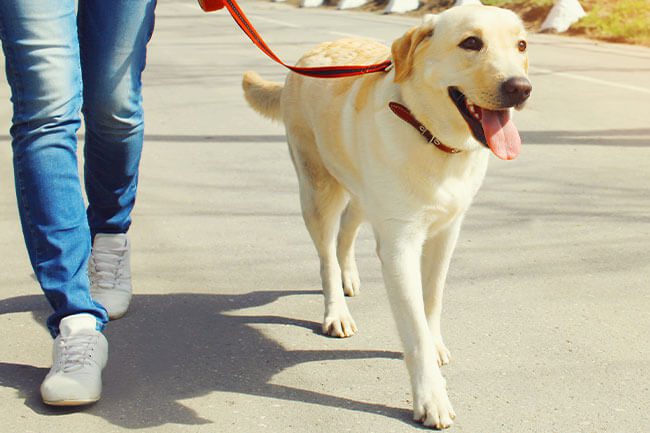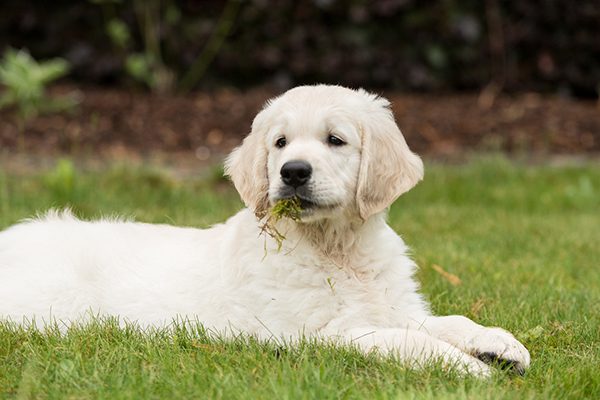TPLO Surgery in Dogs: Why Your Dog Could Need It
Have you noticed your dog walking with a limp? Or maybe they just are not up and active like they used to be. While there could be several reasons for your dog’s unusual behavior, it could be a sign that they are in pain. A torn cranial cruciate ligament is one of the most common injuries that happens to a dog’s knees. It causes the shin bone to move forward in relation to the thigh bone, which results in painful walking and movements.
The cranial cruciate ligament, or CCL, is similar to the ACL in humans. One of its most crucial functions is stabilizing movement of the tibia. Because of the way your dog moves, there is constant pressure on the joint, which makes it even more susceptible to injuries.

In this article, we’ll go over everything you need to know about TPLO surgery in dogs.
How Do I Know When My Dog Needs TPLO?
Since the CCL helps to prevent too much movement between the femur and tibia in your dog’s leg, an injury to the CCL can be extremely painful. It can also cause the joint to become unstable, making daily life uncomfortable for your dog. But how do you know? There are a couple of clear signs you can look for that will signal your dog could be in pain.
Lameness/Inability to Bear Weight
Have you noticed your dog limping? While there can be many reasons that a dog my limp if you do not see any visible signs of harm, it could mean that they have hurt their CCL. Keep a close eye on your dog and see if the limping continues, and if it gets worse.
A torn CCL can also render your dog unable to put weight on the affected leg. This does not always happen in the same way. Some dogs stop using their hurt leg all of a sudden, while others gradually reduce the amount of pressure they are putting on the leg.
Swelling or Thickening at Knee
Determining if your dog is injured sometimes only requires a quick look over their body. An injured CCL results in inflammation and swelling around the knee. If your dog has injured only one leg, it may appear larger than the opposite leg. Over time, an untreated CCL injury can also lead to scar tissue, which can cause the knee to thicken.
Abnormal Sitting
Most dogs sit with their legs tucked. However, dogs with an injury to their CCL may not be comfortable bending their legs. Because of the pain it causes, you may notice your dog sitting with one leg out to the side.
Veterinarians say this shows your dog is uncomfortable fully flexing their knee and may require medical attention.
Stiffness of Back Legs
Unless both CCLs are injured at the same time, lameness will only happen to one leg at a time. However, it is not uncommon for dogs to develop stiffness in both hind legs. You may notice that your dog is just not acting like itself, not wanting to go for walks as frequently or at all.
Clicking Sounds
As with many injuries, if left untreated they can get worse or cause other issues. One of the most common conditions that can result from an injured CCL is a torn meniscus. When the knee moves in an unusual way because of the CCL, it can be torn as well.
If this happens, it can create an audible “click” sound when your dog walks. In addition, to the clicking, you will likely also see some lameness.
What Is TPLO Surgery for Dogs?
If your dog has suffered a knee injury, TPLO surgery may be just the thing to get them back to a more normal life. TPLO stands for Tibial Plateau Leveling Osteotomy. This type of surgery corrects the slope of the tibial plateau to create a better pivot in the knee. Once the slope is corrected, plates and screws hold the tibial plateau in its place until your dog is fully healed. After your dog is healed, the joint should be more stable and your dog can function like they usually do.
While TPLO is considered a major surgery, it is likely that your dog’s quality of life would be diminished further by not going through the procedure. Ligaments and joints deteriorate over time, and can pose more of a risk to your dog’s health than any risk associated with having TPLO surgery. Beyond better mobility, there are several benefits of TPLO surgery, including:
- Rapid Recovery – While recovery can take a few months, it is one of the best options for managing your dog’s long-term pain associated with a CCL injury. Keeping your dog comfortable, and ensuring they stay off the affected foot until they are fully healed.
- Less Chance for Arthritis – If your dog is a breed that may be more prone to arthritis, the TPLO surgery can help to slow the progression of the disease.
- Increased Activity – If a CCL injury has slowed down your dog, TPLO can get them back on their feet. TPLO allows very active dogs to return to their normal play. It is also great for larger dogs, active dogs, and younger dogs.
Success rates are high for TPLO surgery, with an estimated 95% of dogs healing and returning to a more normal activity level. Of course, there are circumstance that may keep TPLO from being the best option for your dog. However, it is important to have your veterinarian guide you through the healing process to help you decide what the best way is to keep your dog living a happy, active life.
What Can You Do At Home for Your Dog?
Once you have your dog home with you, there are several things you can do to ensure that they are healing properly, and that they maintain good overall health. Consider:
- Keep your dog at a healthy weight. This will help to keep pressure off your dog’s joints.
- Exercise with your dog. Make sure the activities are appropriate for your dog’s age and wellness level. Swimming and walking are both great forms of low impact exercise.
- Watch your dog closely. Especially during the healing process, you want to make sure your dog does nothing that could compromise the surgery site.
- Ask questions. If you have questions about mediations or supplements that might help with pain and healing, talk to your veterinarian.
Recent Posts
Why Do Dogs Eat Grass in Clifton Park, NY?
Why Do Dogs Eat Grass in Clifton Park, NY? Do you and your dog spend a lot…
Tips to Treating Your Dog’s Seasonal Allergies in Clifton Park, NY
Tips to Treating Your Dog’s Seasonal Allergies in Clifton Park, NY Spring and summer may be seasons…
Toxic Plants for Pets in Clifton Park, NY
Toxic Plants for Pets in Clifton Park, NY Curiosity is just part of our pet’s nature. Since…
About Us
Originally opened as Animal Care Hospital by Dr. Mark Johnston in 1989, the hospital became Cornerstone Veterinary Hospital in 2015 when it was purchased by Drs. Alan and Lisa Knott. The name 'Cornerstone' holds a special place in their hearts, representing not only their Christian faith but also their commitment to being the cornerstone of the community in which they practice. As a family-owned and operated practice, every pet is treated as part of the family, ensuring they receive the highest standard of care. The team at Cornerstone Veterinary Hospital is dedicated to building lasting relationships with clients and their beloved pets, striving to be the cornerstone of the community in which they practice.



